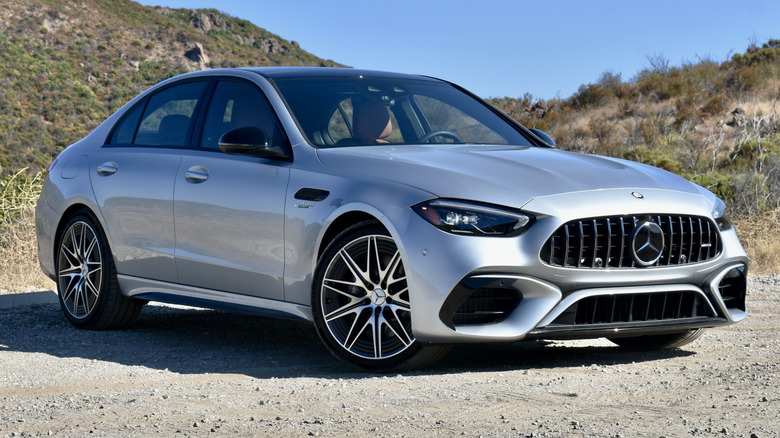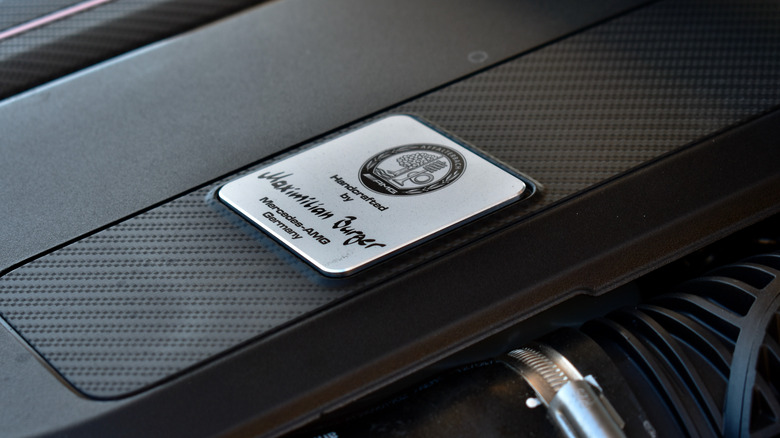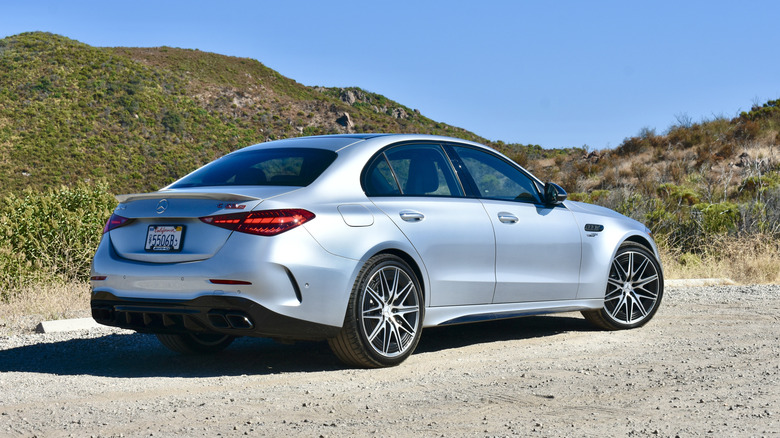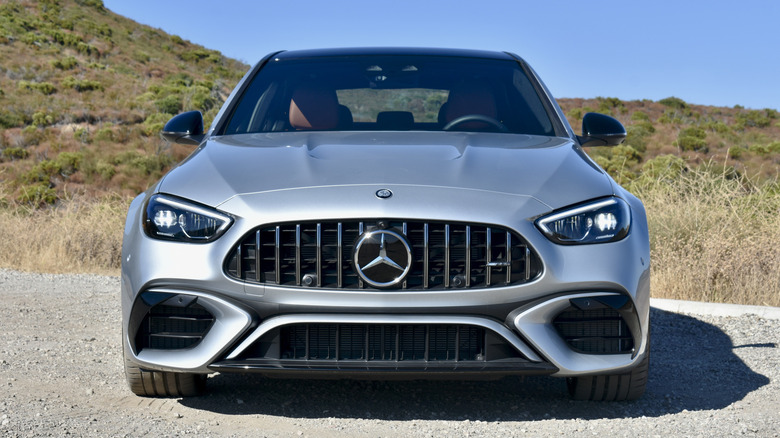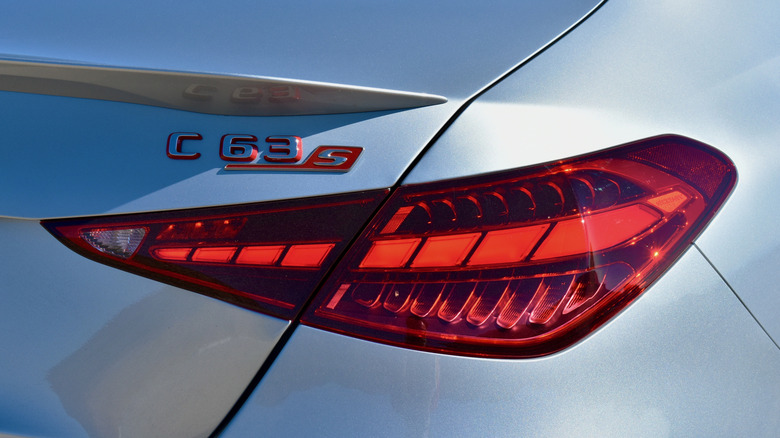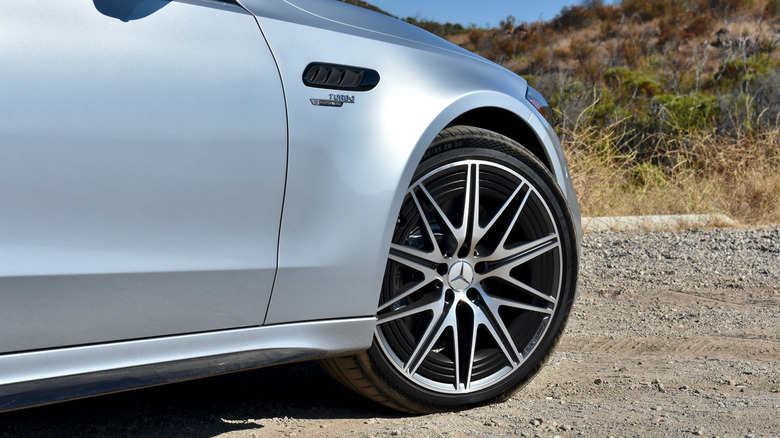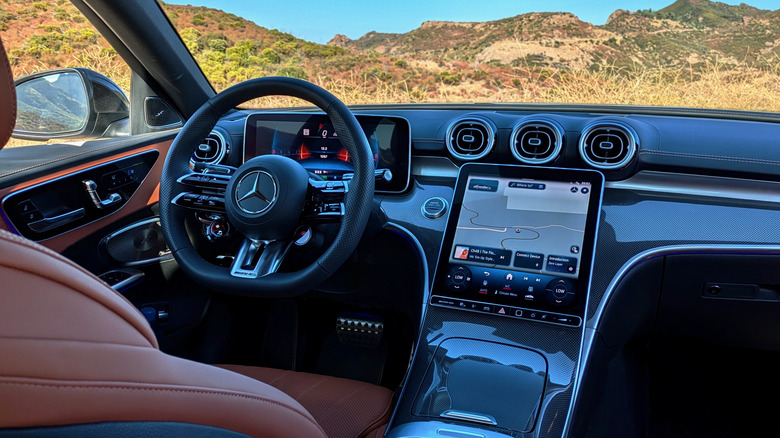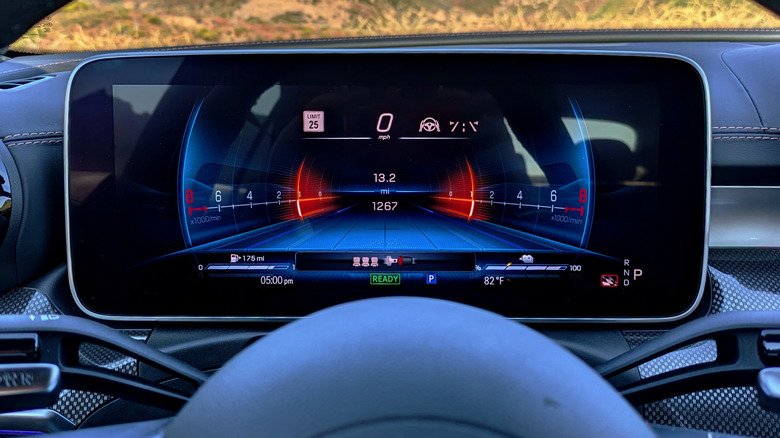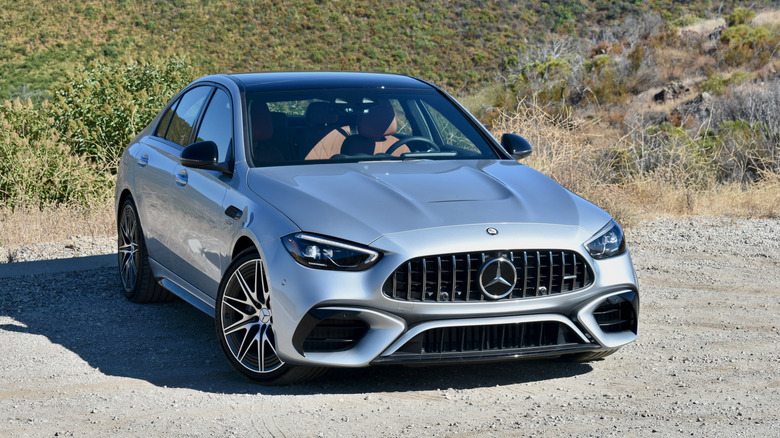2025 Mercedes-AMG C63 S E Performance First Drive: Goodbye V8, Hello F1-Style Hybrid
It's common for race cars to have some connection—however small—with performance road cars. Usually this takes the form of "homologation specials," road cars built specifically to qualify a racing derivative for a particular series. The 2025 Mercedes-AMG C63 S E Performance, however, gets its racing connection not from racing rule makers but from the marketing department.
Mercedes has spent massive sums on Formula One and come away with groaning shelves of trophies. But those trophies don't pay shareholder dividends, and so the German automaker is trying imbue its latest AMG road cars with some F1 mystique—and technology—to drive the time-worn narrative of road-car relevance.
The C63 S E Performance is a high-performance version of the C-Class sedan that packs a plug-in hybrid powertrain (shared with the GLC 63 S E Performance SUV) which, like current F1 powertrains, features a small but power-dense gasoline engine that does most of the work, but with meaningful electric assist. It's an impressive piece of engineering, and you can't help but notice how eager Mercedes is to prove its point.
Handcrafted performance
The outgoing C63 used a twin-turbocharged 4.0-liter V8, and many customers would probably have been happy if that lovely-sounding engine continued in the new model. But such things are no longer on trend. Technology and efficiency are the buzzwords of the day, and gas-guzzling V8s don't represent either.
Instead, the new C63 downsizes to a 2.0-liter turbocharged inline-four. It makes 469 horsepower and 402 pound-feet of torque on its own, which Mercedes says is the highest output of any volume-production four-cylinder engine. As with all AMG engines, it's hand-built by a single craftsperson, whose signature appears on a plaque on the plastic engine cover.
To the left of that signature, plastered with warning stickers, is an electric turbocharger not unlike the MGU-H (motor generator-heat) units used in current F1 cars (though they're due to be scrapped, as part of upcoming 2026 powertrain rule changes). When there isn't enough exhaust gas flow to keep the turbo spinning, a tiny electric motor does the job. That keeps the level of boost constant and improves drivability.
Heavy, but well balanced
The gasoline engine is coupled to a nine-speed automatic transmission with a dedicated clutch for low-speed shifting in place of a conventional torque converter. This helps improve responsiveness, without the jerky shifts of true dual-clutch transmissions. All four wheels handle power and steering.
The turbo-four would be a fantastic engine on its own, but wouldn't provide a genuine improvement in performance over the old V8. Hence the electric assistance.
The components that make the C63 a true plug-in hybrid are packaged at the back. An electric motor helps drive the rear wheels through its own two-speed gearbox and a limited-slip differential, delivering a continuous 94 hp or 201 hp in short bursts. Above this assembly sits the 6.1 kilowatt-hour battery pack, which Mercedes says was designed with lessons learned from F1, including allowing it to charge and discharge rapidly without losing performance.
This packaging gives the C63 a near-perfect 49%/51% front/rear weight distribution, although the overall curb weight is fairly high. At 4,817 pounds, the plug-in hybrid C63 is 917 pounds portlier than its predecessor. F1 cars have also gotten heavier in the hybrid era, to be fair.
Furious acceleration, mediocre soundtrack
Every added pound is cancelled out with added power. Total system output from both hydrocarbons and electrons is 671 hp and 752 lb-ft of torque. That's 168 hp and 236 lb-ft more than the old car, and Mercedes claims the new C63 is half a second quicker from zero to 60 mph, at 3.3 seconds. The top speed is electronically limited to 155 mph, or 174 mph with the optional AMG Performance Design Package.
That's well within the normal range for German super sedans, but more importantly, the various elements of the C63's Rube Goldbergian powertrain come together seamlessly. From the driver's seat you just feel an endless wave of torque, with no hint of the division of labor between the gasoline engine and electric motor. The smoothness and consistency of this powertrain matches the old V8, but of course you now have much more horsepower and torque to play with.
What the plug-in hybrid system can't match, however, is the V8's sound. The rumble of eight perfectly balanced cylinders at work is the Platonic ideal of automotive performance, and while it does sound sporty, the turbo-four isn't quite there. That's also in keeping with the Formula 1 theme, though, as no one watches a race for the flatulent sounds produced by today's F1 cars. Mercedes did at least do a tasteful job with artificial sound enhancement, using recordings of the engine's real exhaust note played at an elevated volume in the cabin.
So many modes
The C63 features an array of drive modes—Electric, Comfort, Battery Hold, Sport, Sport+, Race, Slippery, and Individual—that manage the behavior of the battery pack, powertrain, driver aids, and sound. This allows for quiet and nondescript driving in Electric and Comfort modes, for when you just want to get home, escalating into proper sports sedan shenanigans through Sport, Sport+, and Race. You also get four levels of regenerative braking to choose from, as well as a drift mode that lets the all-wheel drive C63 behave like a rear-wheel drive car.
Race mode unleashes full power and sound, while adjusting the stability control, all-wheel drive system, and steering for more oversteer and more agile turn-in. The combination of speed-sensitive power steering—which decreases assist as speeds increase—and rear-axle steering give the C63 an agile feel despite its weight. However, that feeling is a bit artificial: in the absence of much feedback, you need to approach corners confidently and trust the car to do what it's supposed to.
Plug-in hybrid powertrain aside, this is a typically German brute-force approach to performance. AMG took a heavy sedan and added every piece of hardware and software it could to give physics a run for its money. Putting all of this engineering to work on a good driving road is thrilling, if you can accept that this is not a traditional sports sedan.
Minimal EV range
The C63's plug-in hybrid powertrain gives it an impressive breadth of capabilities, allowing it to play the role of dutiful commuter car once you run out of interesting roads. Just don't expect it to be truly efficient like many other plug-in hybrids.
While electric mode is available at speeds up to 81 mph, Mercedes suggests that you'll have to drive much slower to eke out the maximum electric range, which the automaker estimates at a paltry eight miles. Keep in mind that the hybrid system is designed to always leave some charge in reserve, so as not to diminish performance. That was likely the determining factor behind the C63's battery capacity, not electric range.
Electrification does at least enhance the driving experience in more mundane situations, though. Without an electric motor to share some of the workload and flatten its torque curve, the highly-strung AMG engine probably wouldn't be very pleasant in stop-and-go traffic or highway cruising. With electric assist, the C63 is quiet and calm when you want it to be.
Has it, but doesn't flaunt it
All of the C63's technology, and the diverse driving experiences it enables, arrive in a discreet package. Fender flares accommodating a wider track make the C63 3.3 inches wider than other C-Class models; it's also 3.6 inches longer, primarily due to an AMG-specific front fascia which designers call the "jet wing." It incorporates a toothy AMG grille and enlarged side air intakes, with electronic shutters to regulate airflow.
The hood features raised spines that recalls the Mercedes-Benz 300 SL "Gullwing" of the 1950s–undoubtedly one of the best looking Mercedes cars of all time–with a small air outlet in between. Blade-like side skirts add some visual interest in profile view, while at the back the C63 is distinguished by chunky exhaust outlets, a compact diffuser, and a small decklid spoiler that Mercedes calls an "airflow breakaway."
The AMG styling enhancements blend in well with the basic C-Class design, which itself is clean and stately. Like previous AMG C-Classes, this C63 doesn't attract too much attention to itself, contrasting its high-performance powertrain with a restrained exterior. The effect is similar to watching a quiet, reserved person suddenly punch someone.
Comfy seats, confusing controls
Mercedes gave the interior the usual performance-car enhancements, including a puffed-up steering wheel and front seats. The latter feature the bolstering needed to keep occupants firmly planted while cornering, but are still proper luxury-car seats with plenty of cushioning. Our test car featured carbon fiber trim as well, which made for an unfortunate contrast with the plastic used below eye level. That's a reminder that this car is based off one of the less-expensive models in the Mercedes lineup.
The screen contingent includes a freestanding 12.3-inch digital instrument cluster and an 11.9-inch central touchscreen that reclines onto the dashboard in current Mercedes fashion. Like the base C-Class and other current Mercedes models, the C63 uses the MBUX (Mercedes-Benz User Experience) infotainment system, which incorporates excellent voice recognition and a "zero layer" concept in which key functions are presented as tiles on the touchscreen, reducing the need to toggle back and forth between menus. Wireless Apple CarPlay and Android Auto are included as well.
The AMG steering wheel doesn't have quite as many buttons and knobs as an F1 wheel, but it's still best to familiarize yourself with them before setting off. Vehicle settings like the level of regenerative braking, artificial sound, and drive modes can be selected via small touchpads in addition to the main touchscreen. In theory, these steering-wheel controls make changing settings easier, but in practice we've found them difficult to memorize.
Unique, but not better
Essentially everything notable about the C63 is available as standard equipment for $85,050. Mercedes also offers a Pinnacle grade with augmented reality navigation, a head-up display, and digital light projections for $87,100.
Sticking with the small luxury sports sedan genre, a BMW M3 Competition xDrive is nearly as quick as the C63 for a few grand less. The $77,175 M3 base model and the $63,590 Cadillac CT4-V Blackwing don't seem as impressive by the raw numbers, but they are much less complicated and still boast an excess of performance capability.
The C63 stands out among its rivals thanks to its plug-in hybrid powertrain, and Mercedes' determination to create an F1 tie-in. The automaker has succeeded in that regard—perhaps too well.
Like its F1 cars, Mercedes used electrification to increase power without increasing engine displacement. On paper, then, the new C63 is a clear improvement over its predecessor in horsepower, torque, and acceleration. But current F1 cars are also heavier, more complex, and less dramatic than their predecessors, and the same can be said of the C63. So, while Mercedes has accomplished its mission of tying its AMG road cars to its F1 program, you can't help but feel it's something of a pyrrhic victory.
